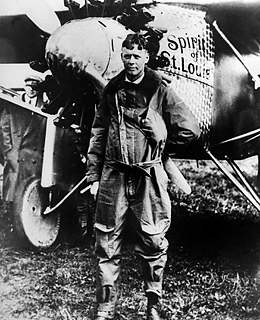
Lucky Lindy was indeed fortunate to have survived the 3,610-mile (5,809 km) flight from Long Island, N.Y., to Paris in 1927 aboard the single-engine Spirit of St. Louis. To keep the weight of the craft to a minimum, his plane had no brakes, radio or parachute. Lindbergh flew through darkness, fog and sleet, his plane at times skimming just 10 ft. (3 m) above the frigid Atlantic. To stay awake during the flight, Lindbergh stuck his hand out the window to blast his face with air, and even tried resting one eye at a time. When he landed in Paris, 33-and-a-half hours after takeoff, Lindbergh was greeted by a cheering mob of 150,000 people, and justly celebrated as the first person to fly nonstop across the Atlantic.